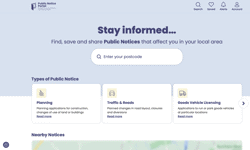Relevance, Relevance, Relevance should be the mantra of all website owners when they are reviewing the effectiveness of their site to deliver the targeted content and service their audience is seeking.
In this review, I will show you how publishers can review or refine their options for targeting different online audience segments.
To review your online audience segmentation, I recommend reviewing five different targeting variables which are presented in order of sophistication. We will review each in turn and, along the way, I will also give you practical tips and examples of how you can make your site more relevant.
1. Relationship with company
Our starting point is simple. Many of your site visitors will be new to your site given the global reach of the internet and the way in which search engines connect visitors with content. Effectively, you have a one-off opportunity to engage first time visitors and clearly communicate the features and benefits of your online offering and credibility. I call this the online value proposition (OVP).
How strong is your OVP?
An example of an OVP is the initial text above the masthead of the Guardian which tells us that it is "Website of the year" and that it was "Last updated less than one minute ago". The OVP is also helpful in communicating a brand promise to visitors who are familiar with the offline brand, but do not know the strength of the online offering. Ideally, the OVP should be communicated run-of-site, but this isn’t the case with the Guardian, so the many visitors who deep link into the site will miss this. Read more on creating OVPs at http://bit.ly/ovp.
For new visitors to a site, effective OVP devices might include: a clear strapline in the masthead, a prominent "Why JOIN" engagement device, highlighting testimonial and numbers of subscribers.
For returning visitors, the OVP could be about featuring the most popular content – perhaps through content pods featuring "Most Commented, Most Viewed and Most Emailed Feature". See publisher Internet Retailing (www.internetretailing.net) for an example. If visitors have cookies set or are subscribers, you can use basic personalisation to show them different content.
2. Demographic segmentation
Demographic segmentation is the familiar audience breakdown based on age, gender, geographic location or social group. Of course, this can only be readily identified for registered site users or subscribers and potentially used to deliver relevant messages where profiles can be accessed in real time. Where known, online demographics are often used as the basis for selling display advertising or for renting email lists. Oftentimes, some of the other forms of segmentation, such as behavioural, will be more worthwhile for publishers since these yield a higher propensity to respond.
Geotargeting site visitors
For publishers, the geographic distribution of site visitors is of particular interest since many visitors will come from overseas, thanks to the international nature of search engines. To see how your proportion of overseas visitors stacks up against competing titles, you can use free tools such as Google Trends for Websites (http://trends.google.com) or Google Ad Planner (www.google.com/adplanner, currently in Beta).
In some sectors, IP Geolocation technology from providers such as Quova is used to direct visitors to relevant local content. For example, if you visit the Hilton site (www.hilton.com) from the UK, you will be offered local content from the site. Information is also available on location within a country, but this tends to be less accurate and is not widely used by publishers.
A word about Webographics
‘Webographics’ are a specific form of online demographics based on the platforms and setup used by site visitors. Web analytics tools will show you screen resolutions and browsers used by visitors which should inform decisions about the extent to which you support different platforms. If you find that your screen resolution suggests increasing popularity of mobile devices such as Blackberries, you may consider repurposing content for this audience or offering a mobile platform.
3. Value
For retailers, higher value customers (indicated by higher average order value and higher modelled customer lifetime values) will often warrant separate communications with different offers. For example, office supplies company Euroffice (www.euroffice.co.uk) uses the open source ad server OpenX (www.openx.org) to deliver relevant promotional messages to customers according to their level of expenditure.
Publishers have the benefit of access to ad serving systems used for revenue generation which can also be deployed to feature tailored offers when ad inventory isn’t available. For example, FT.com features its subscription offer in its paid ad placements. I don’t know of examples whether this technology is used to deliver targeted subscription offers based on a subscriber’s profile and value, but this approach is certainly widely practiced in retail.
Scent trails provide a fantastic low cost form of value-based targeting where users self-select to follow offers if they contain relevant words. For example, the Guardian has a "Guardian Offers" headline blended into its home page which the impecunious will follow.
Scent trails
Using the right words to label links and headlines is important to create a scent trail. Research into online copywriting suggests that users respond best to ‘trigger words’ – they will scan, or if you prefer, ‘sniff’ for terms they associate with the content they’re seeking. The concept of the scent trail can be traced to the Xerox Palo Alto Research Center where researchers postulated that searchers exhibit the same behaviour as animals hunting their prey. They said they become ‘informavores’ who forage or hunt for information. They refer to ‘informavores’ following the ‘scent of information’ in much the same way as carnivores track their prey. The scent confirms for animals they are on the right track and it is similar in website design – if users sense the right scent, they will continue confidently on their journey.
4. Lifecycle stage and engagement
Establishing a visitor’s degree of engagement over time is where more sophisticated and typically more costly targeting approaches come into play. You can establish a simple ladder of loyalty based on the number of times a visitor returns within a month or longer period such as quarterly. If you’re using Google Analytics, you can get a feel for the typical frequency of return visitors through the Visitor Loyalty and Visitor Recency reports.
If you have community or blog features within your site which encourage repeat visitors, more complex RFM (Recency, Frequency, Monetary value) segmentation and targeting is desirable to understand your audience behaviour and follow up accordingly. Publisher Magicalia publishes a wide portfolio of community sites, in areas ranging from parenting, through sports to consumer electronics. It categorises its community visitors according to their recency and loyalty (or frequency) as shown in the figure. It uses this to establish nine different categories of users who can be targeted with relevant communications on site or within email communications.
Further segmentation can be overlaid to establish which types of content drive loyalty. For example, over three quarters of ‘Loyal Stars’ are active community members.
5. Behavioural
RF (Recency Frequency) analysis is only one form of behavioural targeting (BT). Let’s complete our review of online targeting options by looking at some others. On-site BT is one of the big opportunities afforded by online publishing. BT is all about users’ context. It involves assessing customers past actions in following links, reading or interacting with content and then follows up on these with a more relevant message based on their likely propensity to respond based on a previous action.
For publishers, BT is perhaps best known as a service that can be offered to advertisers to increase the frequency their ads are served. Revenue Sciences works with many UK-based online newspaper sites to serve ads based on pages and sections visitors have visited or searches they have performed. For example, BT enables relevant car-related ads to be served to a visitor who has shown intent about a car purchase through visiting the motor section repeatedly, even if they are browsing other sites or sections of the same site.
The concept of behavioural targeting can also be used by site owners for segmentation. This is again based on the categories of pages visited or alternatively how visitors are referred to the site. Within web analytics systems like Google Analytics, filters can be applied so that reports show how particular types of visitors behave. Questions you can ask to gain a deeper understanding of your site audience include content preferences for different situations such as:
* When visitors arrive using a brand search or direct through entering the URL
* First time visitors against returning visitors
* Visitors who access the blog or community section of a site
* Visitors who visit a subscription confirmation page
Through analysing filtered page popularity and customer journeys, insights can be used to change promotions and messages. If we find that visitors to the subscription confirmation page visit a particular type of content, then we can make this type of content more prominent within the user journey.
How do you assess message relevance?
Once different online audience segments have been identified using the techniques mentioned in this article, you will no doubt want to deliver relevant messages to them. But what is relevant for your segments? You may have a hunch based on experience, but what matters is how the audience responds ‘en masse’. This is where A/B and multivariate testing can be highly beneficial. A/B testing refers to testing two different versions of a page or a page element such as a heading, image or button to understand how well it resonates with an audience. The alternatives are served to visitors to the page either randomly split between all audience members or targeting particular segments, such as first time visitors. This helps site owners work out the best message for their audience – for example, which form of words and supporting images encourages sign-up? Skype used A/B testing to evaluate the main topbar navigation of their site. By changing the scent trails navigation labels from ‘Call Phones’ to ‘Skype Credit’ and ‘Shop’ to ‘Accessories’, they increased revenue per visit by 18.75%!
Multivariate testing is more advanced since it enables simultaneous testing pages for all combinations and variations of page elements that are being tested. This enables selection of the most effective combination of design elements to achieve the desired goal.
Bringing it all together in a persona
When you have reviewed all your segmentation options, why not summarise the main customer types through a web design persona? Creating personas of site visitors is a powerful technique for helping increase the usability and customer centricity of a website. Personas are essentially a ‘thumbnail’ description of a type of person. They have been used for a long time in research for segmentation and advertising, but since the mid-1990s have proved effective for improving website design. Effective publisher personas, based around any of the targeting criteria I have discussed in this article, the type of content consumed by different segments and the situations that typically drive site visits, work particularly well.
FEATURE
How relevant are you?
Segmentation of an audience to deliver targeted communications is the cornerstone of marketing, but how does this concept apply in the online setting? Dr Dave Chaffey explains your options for segmenting and targeting your online audience.










